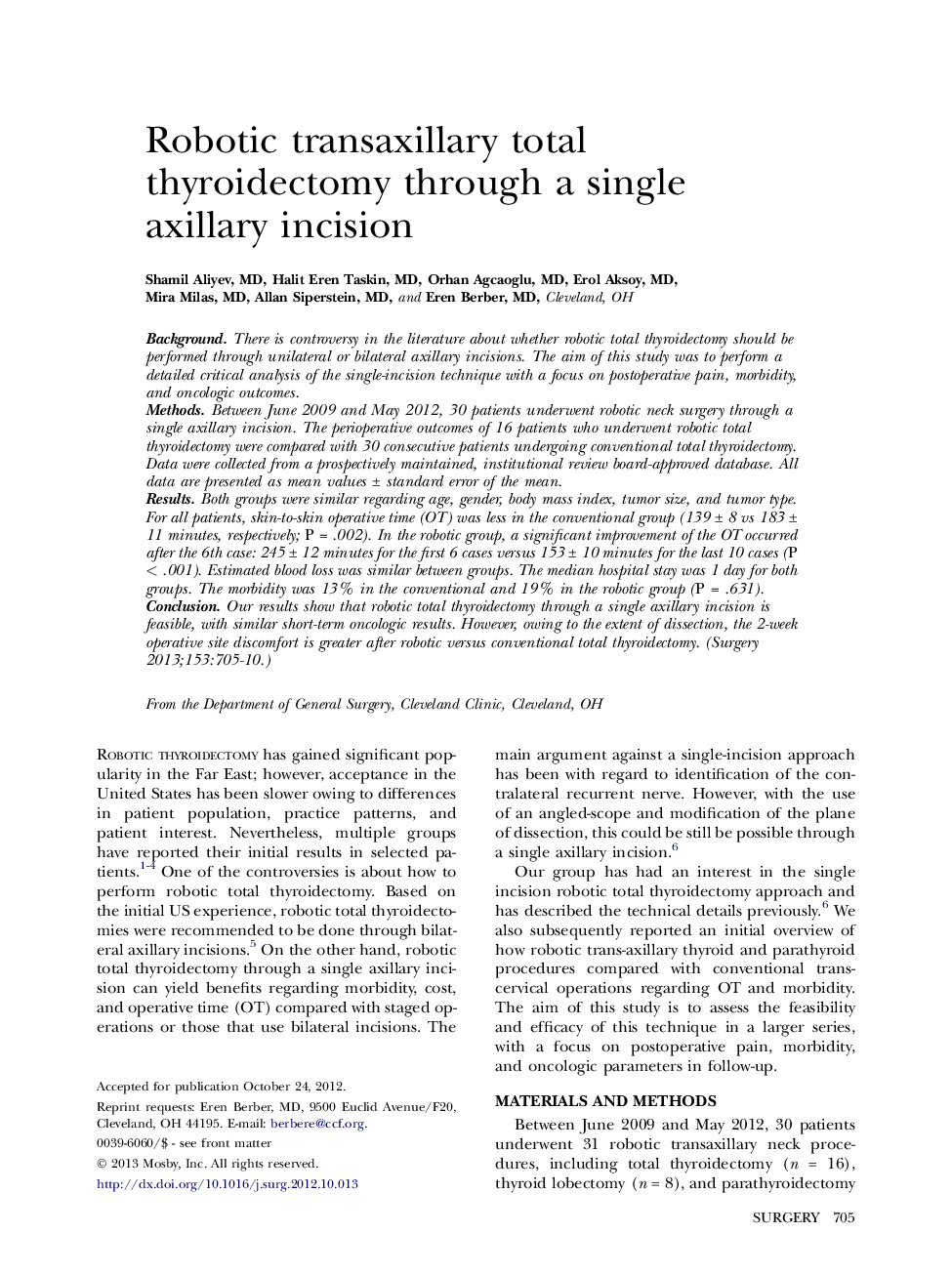| Article ID | Journal | Published Year | Pages | File Type |
|---|---|---|---|---|
| 4307101 | Surgery | 2013 | 6 Pages |
BackgroundThere is controversy in the literature about whether robotic total thyroidectomy should be performed through unilateral or bilateral axillary incisions. The aim of this study was to perform a detailed critical analysis of the single-incision technique with a focus on postoperative pain, morbidity, and oncologic outcomes.MethodsBetween June 2009 and May 2012, 30 patients underwent robotic neck surgery through a single axillary incision. The perioperative outcomes of 16 patients who underwent robotic total thyroidectomy were compared with 30 consecutive patients undergoing conventional total thyroidectomy. Data were collected from a prospectively maintained, institutional review board-approved database. All data are presented as mean values ± standard error of the mean.ResultsBoth groups were similar regarding age, gender, body mass index, tumor size, and tumor type. For all patients, skin-to-skin operative time (OT) was less in the conventional group (139 ± 8 vs 183 ± 11 minutes, respectively; P = .002). In the robotic group, a significant improvement of the OT occurred after the 6th case: 245 ± 12 minutes for the first 6 cases versus 153 ± 10 minutes for the last 10 cases (P < .001). Estimated blood loss was similar between groups. The median hospital stay was 1 day for both groups. The morbidity was 13% in the conventional and 19% in the robotic group (P = .631).ConclusionOur results show that robotic total thyroidectomy through a single axillary incision is feasible, with similar short-term oncologic results. However, owing to the extent of dissection, the 2-week operative site discomfort is greater after robotic versus conventional total thyroidectomy.
